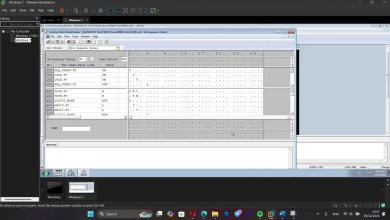Lecture 26 Alerting Event Correlation LAB #cisco #ciscofirepower #ciscosecurity
Creating a lab environment to practice alerting and event correlation with Cisco Firepower can help you gain hands-on experience in setting up effective security monitoring and incident response. Here’s a step-by-step guide to help you set up your lab:
Note: Always refer to the latest documentation and resources for accurate instructions and software versions.
Setting Up the Lab:
Hardware and Software Requirements:
Ensure that you have a computer or server with enough resources to run virtual machines (VMs). You’ll need virtualization software like VMware Workstation, VirtualBox, or Hyper-V.
Virtual Machines:
Create virtual machines for Cisco Firepower, client machines, and any other necessary components. Use evaluation or trial versions of software.
Networking Configuration:
Set up network connectivity among your virtual machines. Configure IP addresses, subnets, and gateway settings.
Configuring Cisco Firepower for Alerting and Event Correlation:
Install and Configure Cisco Firepower:
Set up a Cisco Firepower virtual appliance or simulator in your lab environment. Follow the installation and configuration guidelines.
Logging and Alerting Configuration:
Configure Cisco Firepower to generate logs and alerts for various security events. Configure syslog, email alerts, or SNMP traps for specific events.
Create Event Correlation Rules:
Use Cisco Firepower’s event correlation capabilities to define rules that correlate multiple events to identify potential security incidents. These rules trigger alerts based on specific conditions.
Setting Up a Splunk Instance:
Install Splunk:
Set up a Splunk instance in your lab environment. You can use Splunk Enterprise or Splunk Free if available.
Configure Splunk Inputs:
Configure Splunk to receive logs and events from Cisco Firepower. Set up Splunk to listen for syslog or other relevant inputs.
Creating Correlation Searches and Alerts in Splunk:
Correlation Searches:
Define Splunk searches that analyze incoming Cisco Firepower logs to identify correlated events. These searches can help you detect complex attack patterns or unusual behaviors.
Alerting Actions:
Configure Splunk to trigger alerts when correlation searches identify significant events. Set up email notifications or other alerting actions for your identified scenarios.
Testing and Validation:
Generate Test Events:
Simulate various security events in your lab, such as connection attempts, malware detections, and intrusion attempts. Observe how Cisco Firepower logs and forwards these events to Splunk.
Correlation Testing:
Trigger specific correlation scenarios and verify whether your correlation searches in Splunk identify and alert on the expected events.
Documentation and Learning:
Document Your Setup:
Create documentation that outlines your lab setup, configuration steps, and observations.
Experiment and Learn:
Experiment with different correlation scenarios, adjust correlation rules, and explore how Cisco Firepower and Splunk work together to enhance security monitoring.
This lab will provide you with practical experience in configuring alerting and event correlation with Cisco Firepower and Splunk. You’ll gain insights into creating effective correlation rules and leveraging the power of Splunk’s analytics and alerting capabilities for enhanced security monitoring and incident response.
[ad_2]
source



